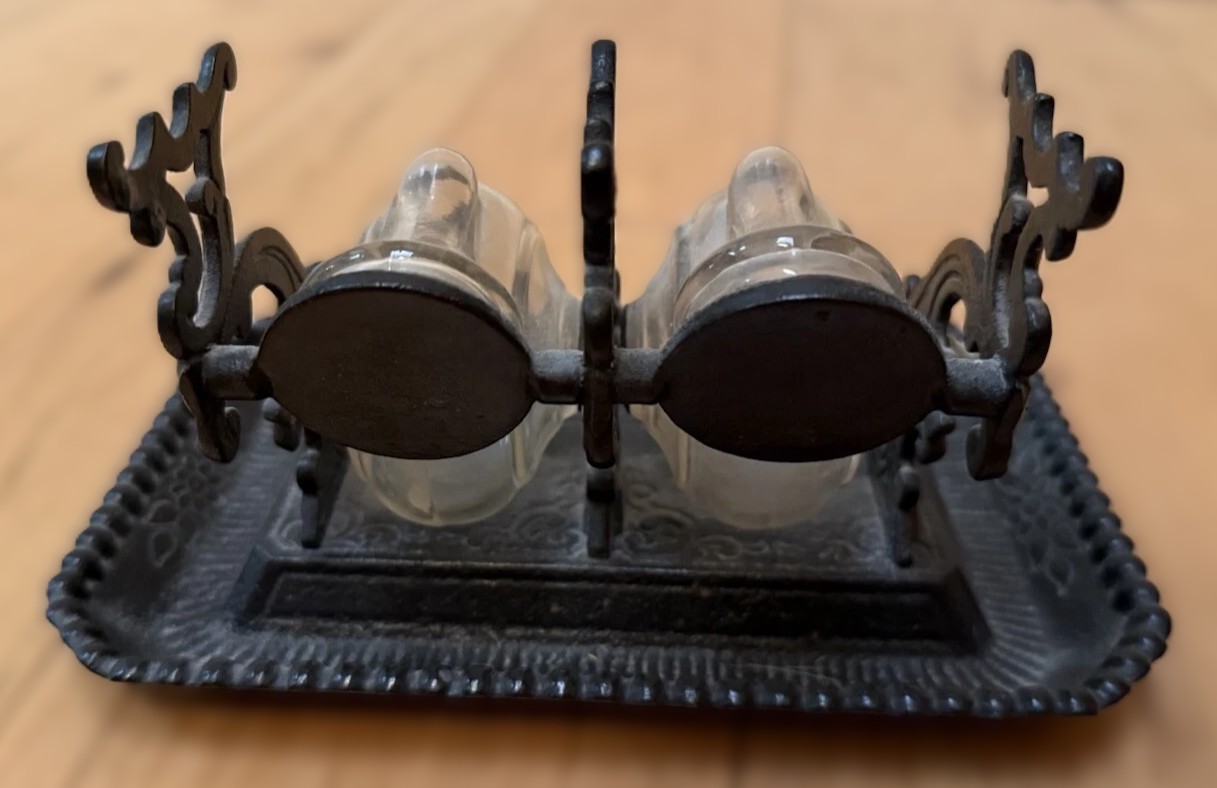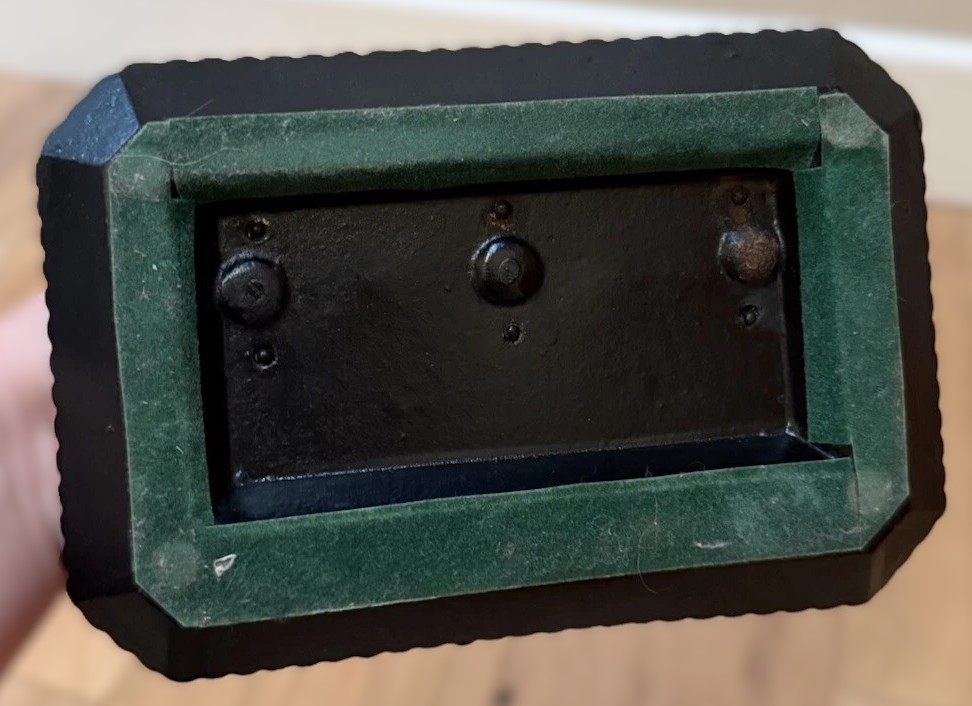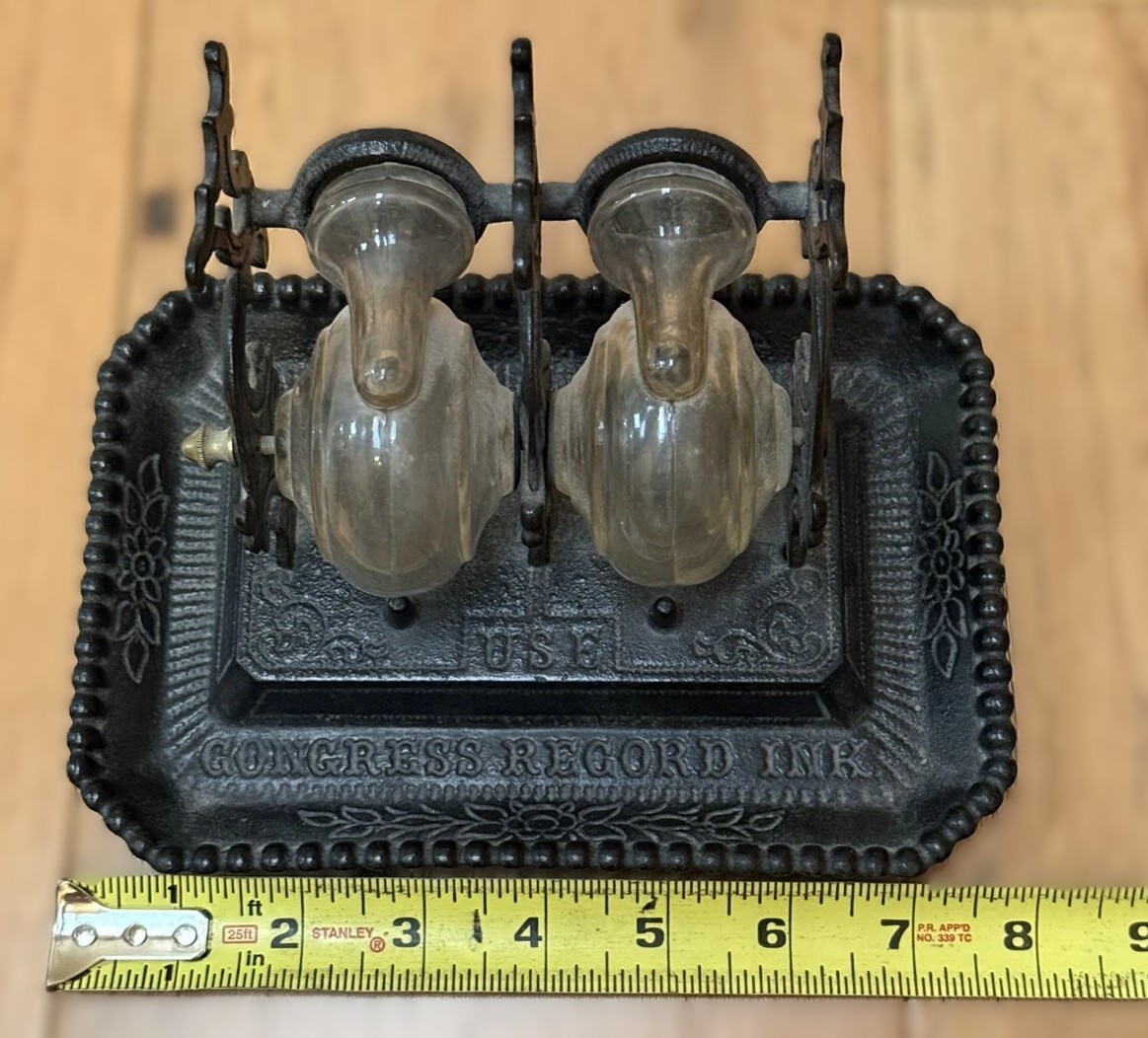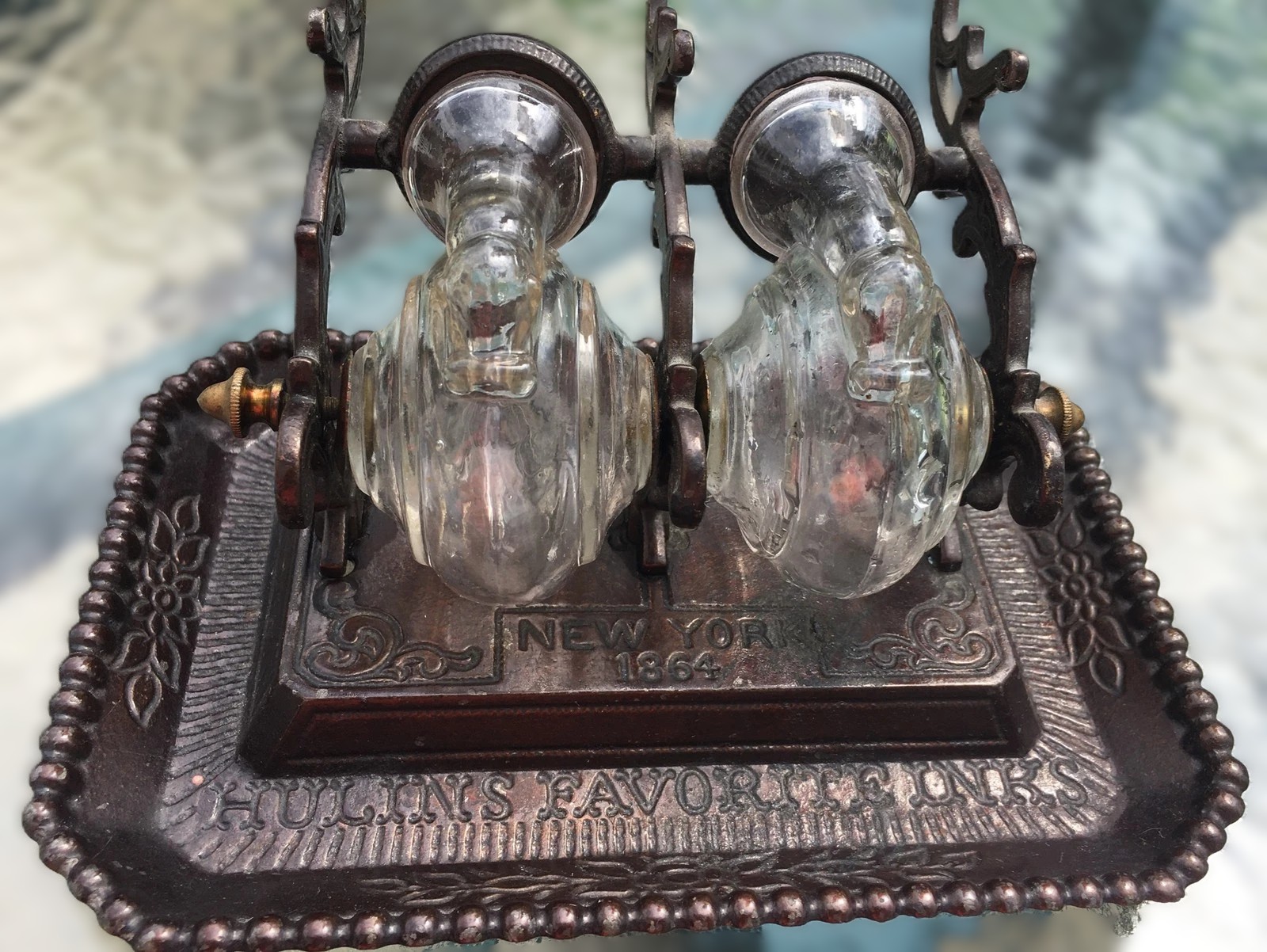
Double Revolving “Snail” Inkstand
| Categories | Mechanical - Snail / Pivoting |
| Type | Snail |
| Material | Cast iron, Glass |
| Markings | See Narrative |
| Manufacturer | Wolcott-Hull |
| Origin | United States |
| Date or Era | circa 1870 |
| Measuring | 7 ¾” x 5 ¼” x 4 ¼” high |
This is a double-revolving “snail” inkstand, so named for its unique inkwells that are shaped like a snail or conch shell. The inkstand features two glass inkwells, an integrated pen rack, and a pivoting mechanism.
- Structure: The inkstand has a rectangular metal base that is made of cast iron. The base has an integrated rack that can hold three pens. The brass hardware, including screws and a central pin, allows the inkwells to revolve.
- Inkwells: There are two inkwells, each made of pressed glass and shaped like a snail shell. One side of the inkwell has a font opening. The inkwells are mounted on a central axis and can be tilted or rotated. Two examples are pictured – one with clear glass and one with cobalt blue glass.
- Markings: The most notable feature is the imprint on the base that reads “USE CONGRESS RECORD INK”.
How a Revolving “Snail” Inkwell Works
The design of a revolving or “tilting” snail inkwell was created to solve a common problem: accessing ink when the inkwell is nearly empty.
When a conventional inkwell is almost empty, the ink sits in a shallow pool at the bottom, making it difficult to dip a pen nib without hitting the glass. The revolving snail inkwell solves this by allowing the user to rotate the glass shell.
The glass snail is designed to pivot on its base. By rotating the shell, the open, trumpet-shaped end can be tilted downward, causing the ink to pool near the opening. This allows a writer to easily dip their pen into the ink and get a full fill, even when the ink level is very low. When finished, the snail is simply rotated back to its upright position, which seals the inkwell and prevents evaporation or spills.
Manufacturer and Advertisement
- Manufacturer: The “Wolcott-Hull” is believed to have manufactured this inkstand.
- “USE CONGRESS RECORD INK”: This phrase, imprinted on the front of the base, is a form of product placement or advertising. During the late 19th and early 20th centuries, it was common for manufacturers of various products to collaborate on promotional items.
- Connection between companies: It is highly likely that the inkwell manufacturer was not the same company that produced the ink. The inkwell manufacturer would have been paid or supplied with ink by the ink company to imprint this message on the product. This was a clever marketing strategy for both companies: the inkwell manufacturer got a production fee, and the ink company got a permanent advertisement on the user’s desk, ensuring repeat purchases of their brand. The Congress Record brand of ink was well-known, particularly in the United States, as a high-quality product for official documents.
- Another example shows “HULINS FAVORITE INKS” and “NEW YORK 1864”.
Age
Based on the style of the cast metal base, the pressed glass inkwells, and the specific use of advertising on such a product, this piece dates to the mid to late 19th century. The period of greatest popularity for these types of elaborate inkstands was from roughly 1870 to 1890.
Clear glass version sold for $145 in August 2025.
The cobalt blue glass version is rare – estimated value: $300
HULINS Favorite Inks sold for $125 in September 2025.
Content disclaimer. The information posted is the owner’s best knowledge and may not have been vetted by the SOIC. We welcome comments, corrections, and additions, working to make our website information comprehensive and accurate.
Join the Society of Inkwell Collectors (SOIC) – it’s free!
Founded in 1981 as a non-profit organization,
we are documenting inkwells (and accessories).
We’re here to help and inform!






























